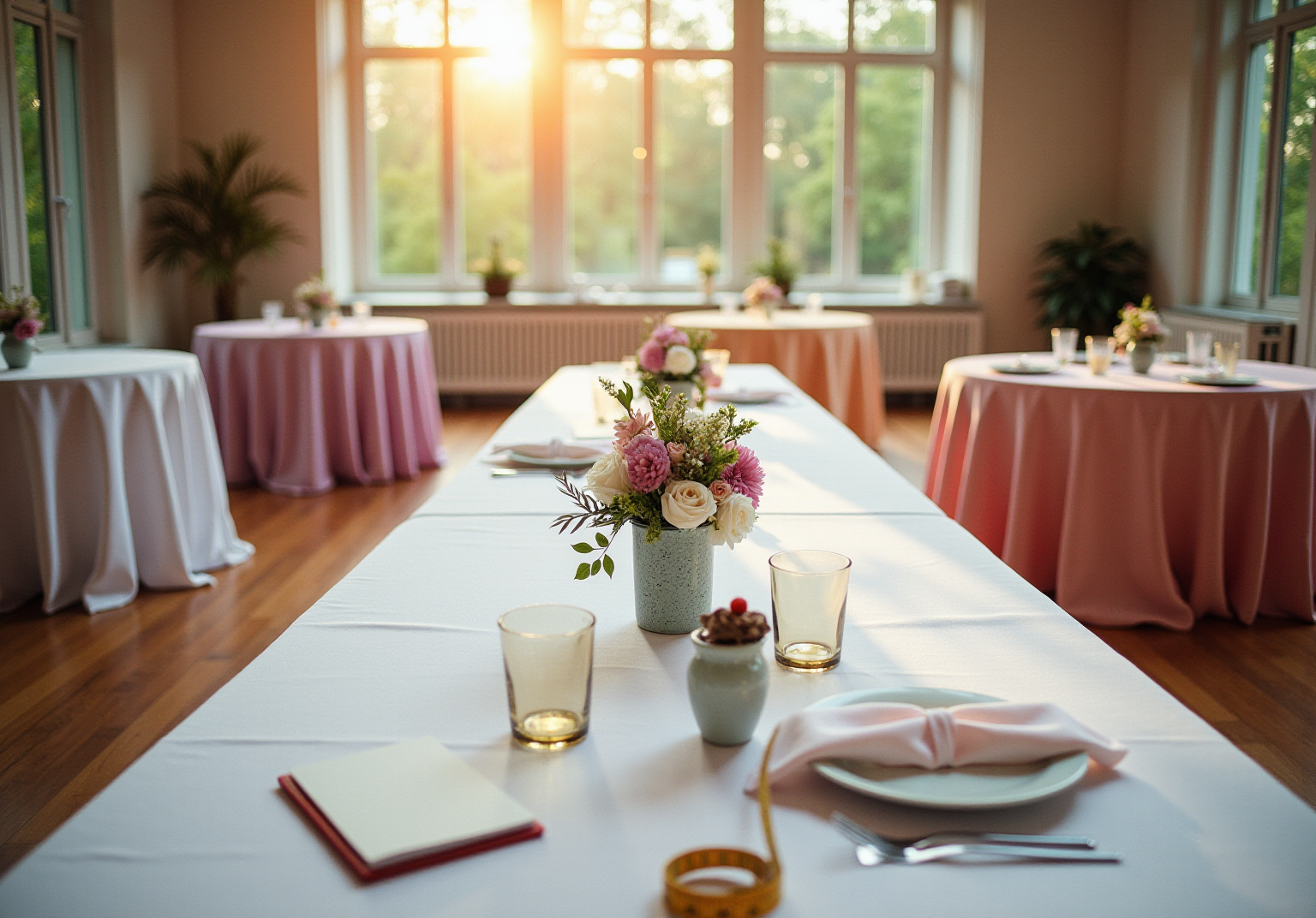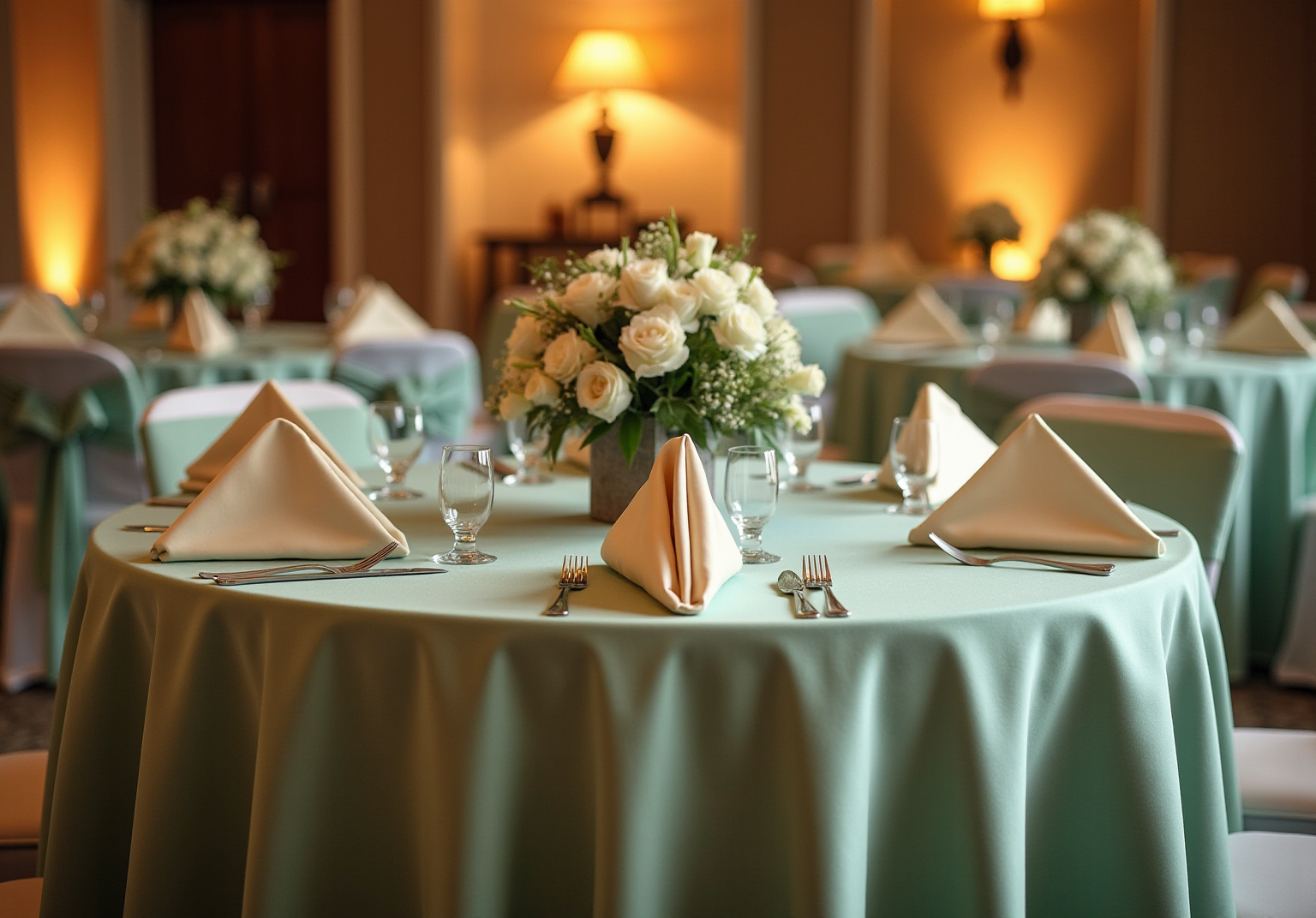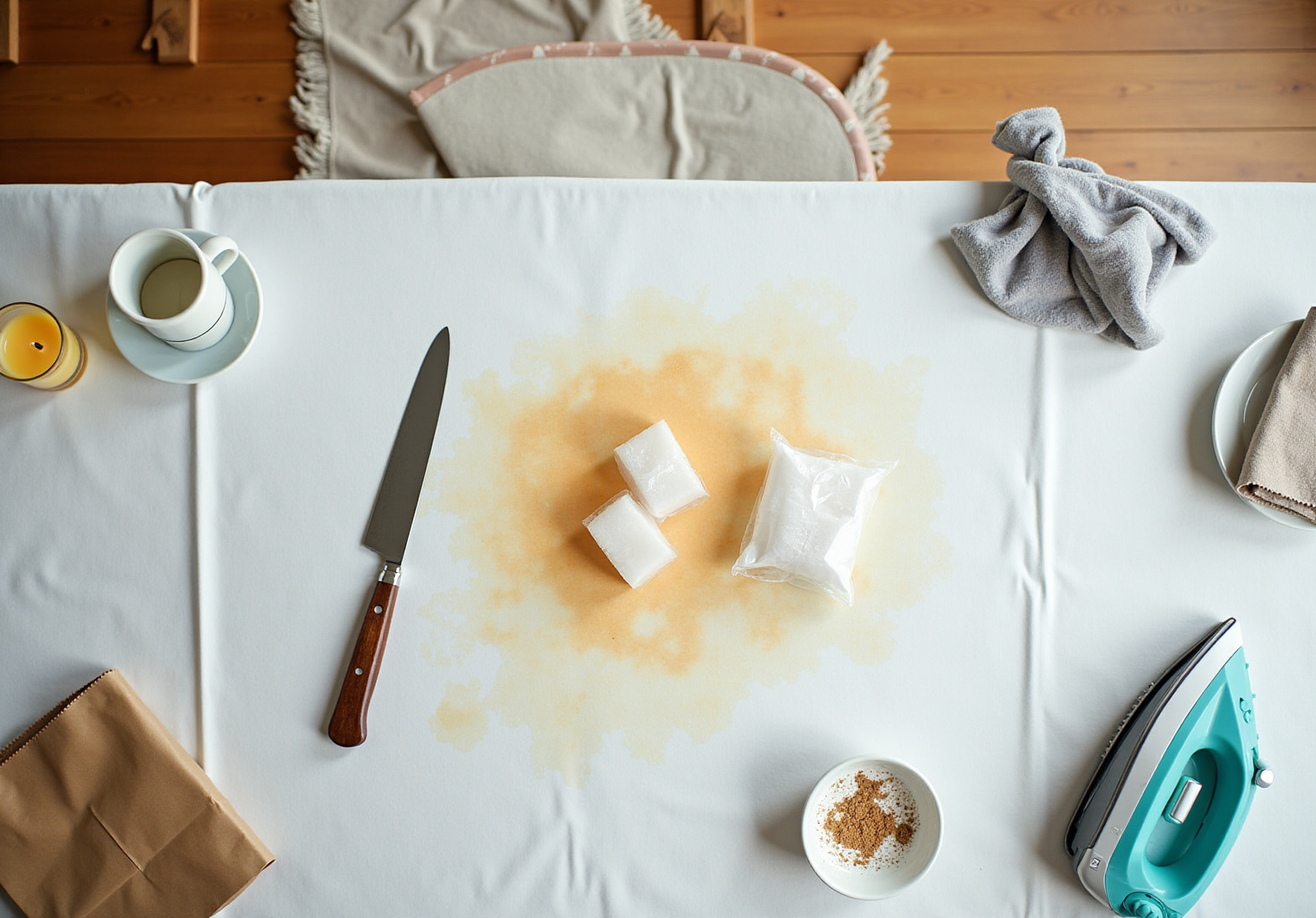Introduction Accurate tablecloth sizing can truly make or break the aesthetic of any event. Yet,...
How to Remove Stains from Table Linens: A Step-by-Step Guide
Introduction
Understanding the various types of stains that can mar the beauty of table linens is essential for maintaining their pristine condition. Research shows that from stubborn food and beverage marks to pesky grease and ink, each stain requires a tailored approach for effective removal. This guide offers a comprehensive look at the best techniques and preventative strategies to ensure tablecloths remain spotless and inviting.
But what happens when a beloved tablecloth bears the scars of countless meals? Can these blemishes truly be eradicated, or are some stains destined to linger forever? These questions highlight the importance of knowing how to care for your linens, ensuring they continue to enhance your events and gatherings.
Identify Common Types of Stains on Tables
To effectively eliminate marks from tablecloths, it’s essential to first understand how to remove stains from the table by identifying the type of blemish. Understanding the nature of the stain helps in knowing how to remove stains from the table, allowing for the selection of the most suitable cleaning technique to ensure your linens remain in pristine condition. Here are the common categories of stains:
- Food Stains: These include a variety of substances such as sauces, oils, and meal residues. Research shows that food marks account for a significant portion of all blemishes on table linens, making timely recognition crucial for effective treatment. Some of the most challenging food stains to remove are coffee, tea, gum, peanut butter, mustard, berry juice, tomato-based sauces, baby food, red wine, chocolate, cooking grease, and butter.
- Beverage Stains: Spills from drinks like red wine, coffee, or juice can leave noticeable marks that require immediate attention. For instance, red wine stains can be particularly stubborn, but swift action can prevent them from becoming permanent.
- Grease Marks: Often resulting from oily foods or dressings, grease marks are notoriously difficult to remove. Techniques such as applying dishwashing detergent can effectively break down the oils.
- Ink Marks: These stains may come from pens or markers and require specific treatments to avoid spreading the discoloration further into the fabric. Blotting with rubbing alcohol is a recommended method for ink removal.
- Organic Stains: Stains from fruits or vegetables can vary in difficulty to remove, depending on the type and how quickly they are treated. For example, berry stains can be effectively treated with a mixture of equal parts dish soap and vinegar.
Identifying these marks helps you understand how to remove stains from the table using the most effective cleaning method. As cleaning specialists emphasize, "Prompt action is crucial, and understanding the type of blemish you’re facing will lead you to the most efficient solution." Additionally, it’s vital to ensure all marks are removed before using a dryer to prevent them from becoming permanent. Regularly cleaning tablecloths can also help maintain their freshness and prevent stains from becoming embedded.
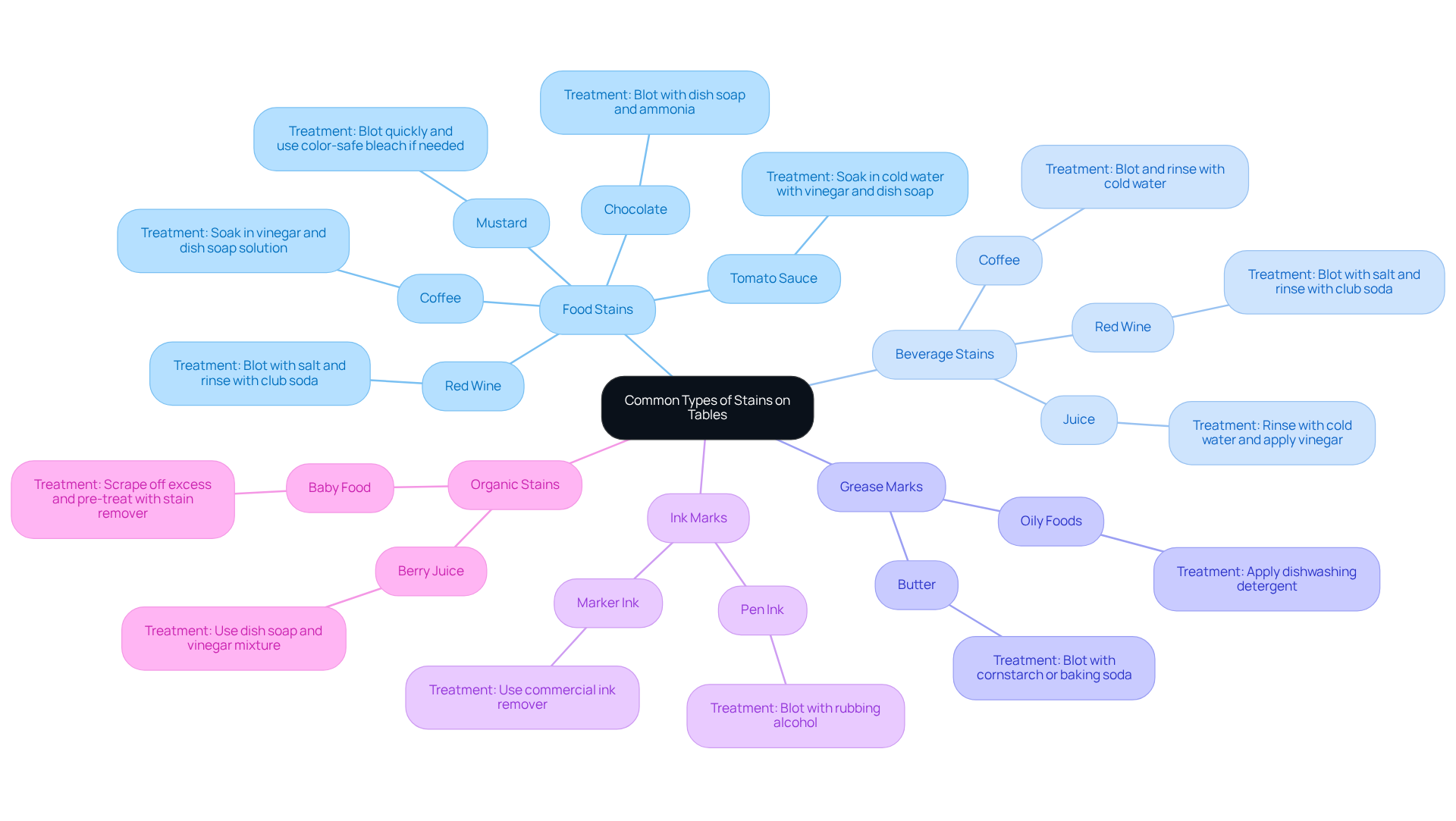
Apply Effective Techniques for Stain Removal
To effectively remove stains from table linens, follow these detailed steps:
-
Blot the Mark: Begin by gently blotting the mark with a clean cloth. Avoid rubbing, as this can spread the mark further into the fabric.
-
Choose the Right Solution: Select a cleaning solution based on the type of stain:
- For food stains, a mixture of dish soap and water works well. Consider using
Dawn Platinum Powerwash Liquid Dish Soap Spray, which can be applied to both sides of the mark and scrubbed with a toothbrush for better results. - For red wine marks, sprinkle salt on the area to absorb the liquid, then rinse with cold water.
- For grease marks, apply cornstarch or baking soda to absorb the oil before washing. Baby powder can also be sprinkled on grease marks right after a spill to absorb the grease.
- For food stains, a mixture of dish soap and water works well. Consider using
-
Soak the Mark: For more persistent marks, immerse the fabric in cold water for approximately 30 minutes prior to using any cleaning solution. This aids in releasing the discoloration from the fabric fibers.
-
Clean the Linen: After addressing the mark, wash the linen according to the care instructions, typically in cold water. This prevents the mark from setting permanently. It's crucial to examine the tablecloth after washing to ensure all marks are eliminated before drying.
-
Air Dry: Allow the linen to air dry instead of using a dryer. Heat can set any remaining marks, so ensure the blemish is completely removed before drying.
Real-life examples illustrate the effectiveness of these methods. For instance, utilizing a combination of dish soap and white vinegar has proven effective in eliminating berry marks, while prompt action with salt on red wine can greatly lessen the mark's visibility. Cleaning experts stress that prompt action is essential; as one specialist from COIT mentioned, "Understanding the kind of mark you’re facing will lead you to the most effective solution."
Success rates differ by approach, but methods like soaking in vinegar or utilizing commercial cleaners such as OxiClean have demonstrated high effectiveness for tough marks. Customer recommendations indicate soaking marked areas in a combination of OxiClean and vinegar for difficult spots. By following these steps and utilizing the right techniques, you can understand how to remove stains from table and preserve the pristine condition of your cloths.
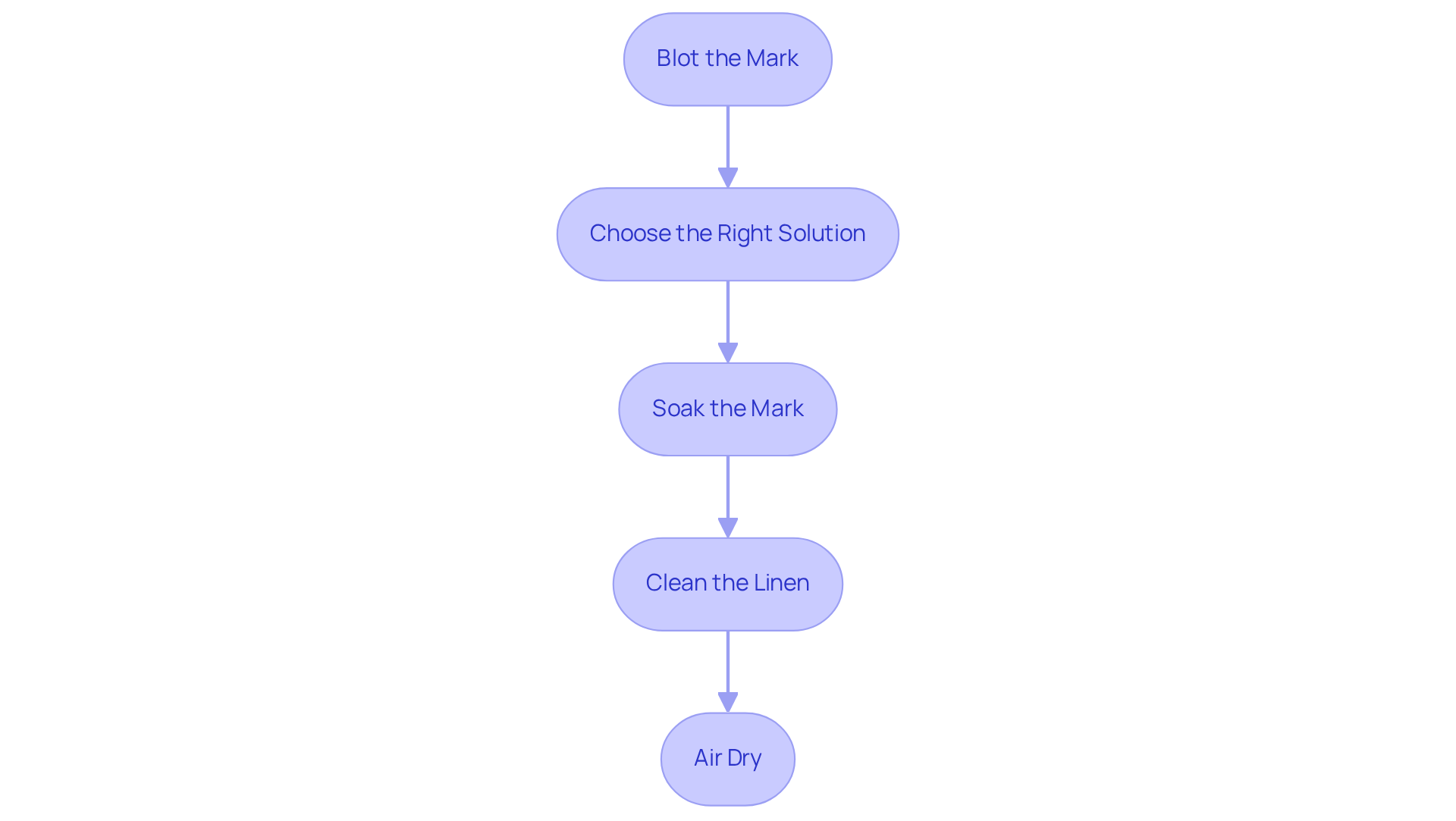
Implement Preventative Strategies to Protect Your Table
To keep your table linens looking pristine and effectively prevent stains, consider implementing these proven strategies:
- Utilize Table Protectors: Invest in high-quality table protectors, such as tempered glass or fabric options. These provide excellent coverage and prevent spills from reaching your linens. Not only do they guard against marks, but they also help preserve the integrity of your table surfaces.
- Select Appropriate Materials: Opt for stain-resistant fabrics or blends that are easier to clean, like polyester or cotton-polyester mixes. These materials are designed to withstand spills and are often machine washable, making them ideal for both everyday use and special occasions.
- Set Up Thoughtfully: Use sturdy serving dishes and avoid overfilling them to minimize the risk of spills. Properly securing tablecloths with clips or non-slip pads can also prevent shifting and reduce wear. Immediate action is crucial when learning how to remove stains from table. Blot the area gently with a clean cloth and treat the stain with an appropriate cleaner before it sets. This quick response can significantly reduce the likelihood of permanent staining, especially when considering how to remove stains from table.
- Maintain Regular Cleaning: Wash your table linens regularly, even if they appear clean. This practice prevents dirt accumulation and keeps textiles fresh. For best results, follow the care instructions specific to each material.
Real-world examples highlight the effectiveness of these strategies. Many event planners recommend layering a protective cover beneath decorative tablecloths to combine elegance with practicality. As one planner noted, using a plastic protector under a fabric cloth offers the best of both worlds-style and spill resistance. Additionally, families often find that waterproof and oilproof tablecloths provide peace of mind, allowing them to enjoy meals without the constant worry of stains. By adopting these best practices, you can ensure your table linens remain in excellent condition, ready for any occasion.
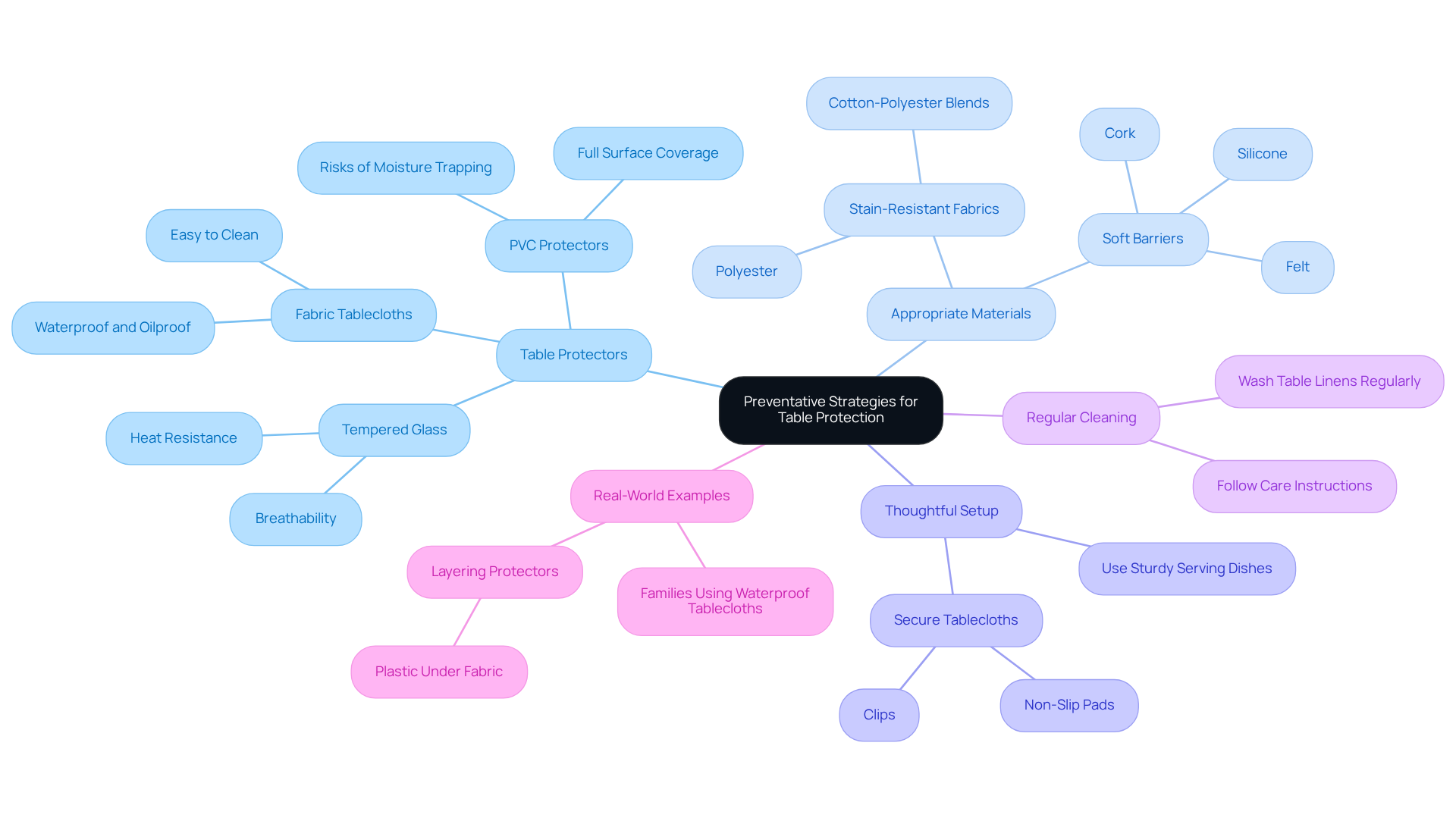
Conclusion
Understanding how to effectively remove stains from table linens is essential for maintaining their beauty and longevity. By identifying the type of stain and applying the appropriate cleaning techniques, you can tackle even the most stubborn marks with confidence. This guide underscores the importance of prompt action and the correct methods for various stains, ensuring that your tablecloths remain in pristine condition for any occasion.
The article details common types of stains:
- Food
- Beverage
- Grease
- Ink
- Organic marks
along with specific strategies for each. Techniques like blotting, using suitable cleaning solutions, soaking, and air drying are crucial steps in the stain removal process. Additionally, preventative measures such as utilizing table protectors, choosing stain-resistant materials, and maintaining regular cleaning routines are effective ways to safeguard your table linens from future stains.
Ultimately, preserving the quality of your table linens not only enhances the dining experience but also reflects care and attention to detail. By implementing the strategies discussed, you can confidently protect your tablecloths and ensure they remain a beautiful centerpiece for gatherings. Taking proactive steps in stain prevention and prompt action in cleaning can make all the difference in keeping your table linens looking their best.
Frequently Asked Questions
Why is it important to identify the type of stain on tables?
Identifying the type of stain helps in selecting the most suitable cleaning technique, ensuring effective removal and maintaining the condition of the linens.
What are the common types of stains found on tables?
The common types of stains include food stains, beverage stains, grease marks, ink marks, and organic stains.
What are examples of food stains and why are they significant?
Examples of food stains include coffee, tea, gum, peanut butter, mustard, berry juice, tomato-based sauces, baby food, red wine, chocolate, cooking grease, and butter. They account for a significant portion of all blemishes on table linens, making timely recognition crucial for effective treatment.
How should beverage stains, such as red wine, be handled?
Beverage stains, particularly from drinks like red wine, require immediate attention to prevent them from becoming permanent.
What is the recommended method for removing grease marks?
Grease marks can be effectively removed by applying dishwashing detergent, which helps break down the oils.
How can ink marks be treated?
Ink marks should be blotted with rubbing alcohol to avoid spreading the discoloration further into the fabric.
What should be done for organic stains from fruits or vegetables?
Organic stains can vary in difficulty to remove, but berry stains can be treated effectively with a mixture of equal parts dish soap and vinegar.
What should be done before using a dryer on stained linens?
It is vital to ensure all marks are removed before using a dryer, as heat can cause stains to become permanent.
How can regular cleaning of tablecloths help?
Regularly cleaning tablecloths helps maintain their freshness and prevents stains from becoming embedded.

